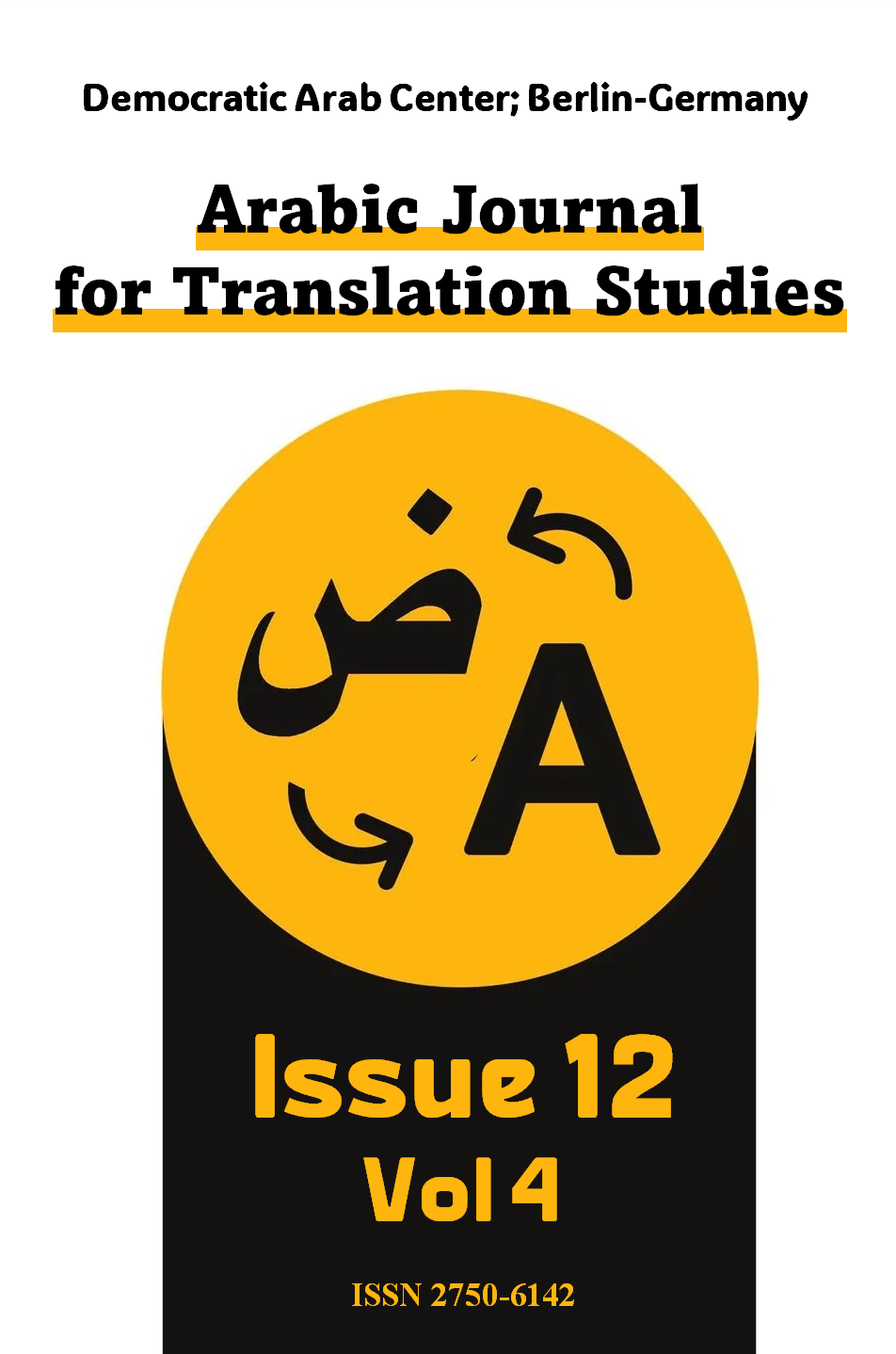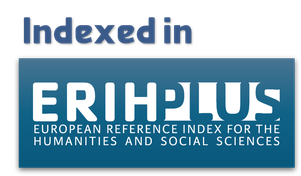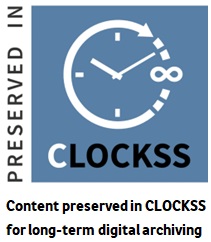Calculating the Hidden Costs of University Absenteeism Through Internal Efficiency and Loss
DOI:
https://doi.org/10.63939/AJTS.tsnj0e17Keywords:
Hidden cost, Absenteeism, Loss, Student, Teacher-researchersAbstract
The current financial crisis in universities is multifaceted, it depends not only on visible aspects but also on latent aspects, this is why the prism of analysis must be broadened to include the various points that could explain the crisis in a university system on the brink of collapse. Therefore, in this article we will analyze through the theory of hidden performance costs, the indirect costs of the university system, especially the phenomenon of absenteeism of the student and teacher-researchers. Our objective is to explain that the absenteeism of students and teachers costs the state huge sums, leading to immeasurable consequences on the budgetary efficiency of universities. To do this, we will introduce this imperceptible phenomenon in the calculation of the internal efficiency and loss of a given university system.
Downloads
References
Abderma, A., and Benesrighe, D. (2015). Towards a new architecture of the public financial management system: Case of Moroccan University. International Journal of Innovation and Applied Studies, 13(3), 538-547.
Retrieved from https://ijias.issr-journals.org/abstract.php?article=IJIAS-15-145-01
AbuRuz M.E. (2015). Does excessive absence from class lead to lower levels of academic achievement? European Scientific Journal, 11(7), 146-153. Retrieved from http://eujournal.org/ index.php/esj/article/viewFile/5312/5121
Amrani, H., Boussouf, Z., and Aftiss, A. (2023). The Moroccan university: Between the plurality of controls and the primordiality of instrumentation by management control: an exploratory qualitative analysis of Sidi Mohammed Ben Abdellah University. African Scientific Journal, 3(19), 995. Retrieved from https://doi.org/10.5281/zenodo.8370345
Annual report of the Court of Auditors for the year 2018, 38-61.
Retrieved from https://www.courdescomptes.ma/wp-content/uploads/2023/01/Rapport-CDC_-Partie2_2018.pdf
Benshaul-Tolonen, A., Zulaika, G., Sommer, M., Phillips-Howard, P.A. (2020). Measuring Menstruation-Related Absenteeism Among Adolescents in Low-Income Countries. In: Bobel, C., Winkler, I.T., Fahs, B., Hasson, K.A., Kissling, E.A., Roberts, TA. (eds) The Palgrave Handbook of Critical Menstruation Studies. Singapore: Palgrave Macmillan. Retrieved from https://doi.org/10.1007/978-981-15-0614-7_52 DOI: https://doi.org/10.1007/978-981-15-0614-7_52
Bollecker, M. (2016). L’adoption de la comptabilité de gestion à l’université : la présence de clivages internes dans un contexte de demandes institutionnelles contradictoires. Comptabilité - Contrôle - Audit. 22 (2), 109-138. Retrieved from https://shs.cairn.info/revue-comptabilite-controle-audit-2016-2-page-109?lang=fr&ref=doi DOI: https://doi.org/10.3917/cca.222.0109
Bouzouita, A., & Kooli, I. (2024). Evaluating the performance of Tunisian higher Institutes of Technological Studies (ISETs) using a stochastic frontier analysis. Evaluation and program planning, 107. Retrieved from https://doi.org/10.1016/j.evalprogplan.2024.102480 DOI: https://doi.org/10.1016/j.evalprogplan.2024.102480
Brooks, S. S. (1921). Measuring the Efficiency of Teachers by Standardized Tests. The Journal of Educational Research, 4(4), 255-264. Retrieved from http://www.jstor.org/stable/27524540 DOI: https://doi.org/10.1080/00220671.1921.10879204
Brouwer, W., Verbooy, K., Hoefman, R. et al. Production Losses due to Absenteeism and Presenteeism: The Influence of Compensation Mechanisms and Multiplier Effects. PharmacoEconomics, 41, 1103-1115. Retrieved from https://doi.org/10.1007/s40273-023-01253-y DOI: https://doi.org/10.1007/s40273-023-01253-y
Cascio, W. F. (1991). Costing Human Resources: The Financial Impact of Behavior in Organizations (3rd. ed.). Boston: PWS-Kent Publishing Company
El Ferouali, S., & Ouhadi, S. (2024). Digital transformation in Moroccan higher education: a literature review. African Journal of Management, Engineering and Technology, 1(2), 135-148. Retrieved from https://revues.imist.ma/index.php/AJMET/article/view/44921
Entwisle, D. R., Alexander, K. L., & Olson, L. S. (2001). Keep the faucet flowing summer learning and home environment. American Educator, 25(3), 10-15
Goksen, Y., Dogan, O., & Ozkarabacak, B. (2015). A data envelopment analysis application for measuring the efficiency of university departments. Procedia Economics and Finance, 19, 226-237. Retrieved from https://doi.org/10.1016/s2212-5671(15)00024-6 DOI: https://doi.org/10.1016/S2212-5671(15)00024-6
Gren Landell, M. (2021). School attendance problems. A research update and where to go. Stockholm: Jerringfonden.
Retrieved From https://jerringfonden.se/wp-content/uploads/2021/04/202101-Jerringfonden-Antologi-A5-sammanslagen.pdf
Gubbels, J., Van der Put, C. E., & Assink, M. (2019). Risk factors for school absenteeism and dropout: A meta-analytic review. Journal of Youth and Adolescence, 48, 1637 1667. Retrieved from https://doi.org/10.1007/s10964-019-01072-5 DOI: https://doi.org/10.1007/s10964-019-01072-5
Heyne, D., Gren-Landell, M., Melvin, G., & Gentle-Genitty, C. (2019). Differentiation between school attendance problems: Why and how? Cognitive and Behavioral Practice, 26(1), 8-34. Retrieved from https://doi.org/10.1016/j.cbpra.2018.03.006 DOI: https://doi.org/10.1016/j.cbpra.2018.03.006
Huse, E. F., and Taylor, E. K. (1962). Reliability of absence measures. Journal of Applied Psychology, 46(3), 159-160. Retrieved from https://doi.org/10.1037/h0041263 DOI: https://doi.org/10.1037/h0041263
Jacobs, K. D., and Kritsonis, W. A. (2007). An Analysis of Teacher and Student Absenteeism in Urban Schools: What the Research Says and Recommendations for Educational Leaders, Lamar University Electronic Journal of Student Research Fall 2007, Online Submission. Retrieved from https://eric.ed.gov/?id=ED499647
Llauró, A., Fonseca, D., Romero, S., Aláez, M., Lucas, J. T., and Felipe, M. M. (2023). Identification and comparison of the main variables affecting early university dropout rates according to knowledge area and institution. Heliyon, 9(6), e17435. Retrieved from https://doi.org/10.1016/j.heliyon.2023.e17435 DOI: https://doi.org/10.1016/j.heliyon.2023.e17435
Lockheed, M. E., & Hanushek, E. A. (1994). Concepts of educational effectiveness and efficiency. World Bank.
Retrieved from: http://documents.worldbank.org/curated/en/727651468739517517
Luongo, E. P. (1959). Analysis of absenteeism in industry. California medicine, 91(6), 348-354. https://pmc.ncbi.nlm.nih.gov/articles/PMC1577980/
Mansouri, Z. (2017). A look at university dropout in Moroccan higher education. The Journal of Quality in Education, 7(9), 27. Retrieved from https://doi.org/10.37870/joqie.v7i9.11 DOI: https://doi.org/10.37870/joqie.v7i9.11
Mashaba, E.K. & Maile, S. (2013). The cost of teacher absenteeism in selected Soshanguve Township schools, South Africa. International Journal of Arts and Entrepreneurs, 3(1), 171-197. Retrieved from https://www.ijsse.org/articles/ijsse_v1_i3_171_197.pdf
Murshidi, G.A. (2017). Opportunities and Challenges of Mobile Learning That University Students Encounter in the UAE. International Research in Higher Education (2)4, 18-37. Retrieved from https://doi.org/10.5430/irhe.v2n4p18 DOI: https://doi.org/10.5430/irhe.v2n4p18
Nowak, J., Emmermacher, A., Wendsche, J., Döbler, A. S., & Wegge, J. (2023). Presenteeism and absenteeism in the manufacturing sector: A multilevel approach identifying underlying factors and relations to health. Current Psychology, 42(22), 18641-18659. Retrieved from https://doi.org/10.1007/s12144-022-03013-1 DOI: https://doi.org/10.1007/s12144-022-03013-1
Papaioannou, G., Podinovski, V.V. (2024). Free disposal hull models of multicomponent technologies. Annals of Operations Research. Retrieved from https://doi.org/10.1007/s10479-024-06140-z DOI: https://doi.org/10.1007/s10479-024-06140-z
Schmid, J. A., Jarczok, M. N., Sonntag, D., Herr, R. M., Fischer, J. E., and Schmidt, B. (2017). Associations Between Supportive Leadership Behavior and the Costs of Absenteeism and Presenteeism: An Epidemiological and Economic Approach. Journal of Occupational and Environmental Medicine, 59(2), 141-147. DOI: https://doi.org/10.1097/JOM.0000000000000919
Retrieved from https://www.jstor.org/stable/48501520
Smith, H.L., and Watkins, W.E. 1978. Managing Manpower Turnover Costs. Personnel Administrator, 23(4), 46-50
Tan, E. S., Tj. Imbos, and R. J. M. M. Does. (1994). A Distribution-Free Approach for Comparing Growth of Knowledge. Journal of Educational Measurement, 31(1), 51-65. Retrieved from http://www.jstor.org/stable/1435097 DOI: https://doi.org/10.1111/j.1745-3984.1994.tb00434.x
Tawil, S., Cerbelle, S., and Alama, A. (2010). Education au Maroc : analyse du secteur. UNESCO. Retrieved from https://unesdoc.unesco.org/ark:/48223/pf0000189743
Triadó-ivern, X., Aparicio-chueca, P., Guàrdia-olmos, J., Perócebollero, M. & Jaría-chacón, N. (2013). Empirical approach to the analysis of university student absenteeism: proposal of a questionnaire for students to evaluate the possible causes. Quality & Quantity. 47(4), 2281-2288 DOI: https://doi.org/10.1007/s11135-011-9654-3
Tyndall, D. G., and Barnes, G. A. (1962). Unit Costs of Instruction in Higher Education. The Journal of Experimental Education, 31(2), 114-118. DOI: https://doi.org/10.1080/00220973.1962.11010748
Retrieved from http://www.jstor.org/stable/20156616
Ullrich, D., Butz, A., Diefenbach, S. (2023). The fernstudent enhancing the potential of hybrid teaching based on user-centered design, in Proceeding of the 20 the international conference on cognition and exploratory learning in the digital age (CELDA 2023), 214-222. Retrieved from https://files.eric.ed.gov/fulltext/ED636601.pdf
UNESCO, (2009). Indicateurs de l’éducation ; directives techniques. Retrieved from https://uis.unesco.org/sites/default/files/documents/education-indicators-technical-guidelines-fr.pdf
Yılmaz, T., and Sarpkaya, R. (2022). A Case Study on University Dropout: Perspectives from Education Faculty Students and Academicians. Research in Educational Administration and Leadership, 7(3), 519-559. Retrieved from https://doi.org/10.30828/real.1163503 DOI: https://doi.org/10.30828/real.1163503
Downloads
Published
Issue
Section
License

This work is licensed under a Creative Commons Attribution-NonCommercial 4.0 International License.
As an open-access the journal follows the CC BY-NC 4.0 Attribution-NonCommercial 4.0 International which states that:
- you are free to:
- Share— copy and redistribute the material in any medium or format.
- Adapt— remix, transform, and build upon the material.
- Under the following terms:
- Attribution— You must give appropriate credit, provide a link to the license, and indicate if changes were made. You may do so in any reasonable manner, but not in any way that suggests the licensor endorses you or your use.
- NonCommercial — You may not use the material for commercial purposes.
- No additional restrictions — You may not apply legal terms or technological measures that legally restrict others from doing anything the license permits.












